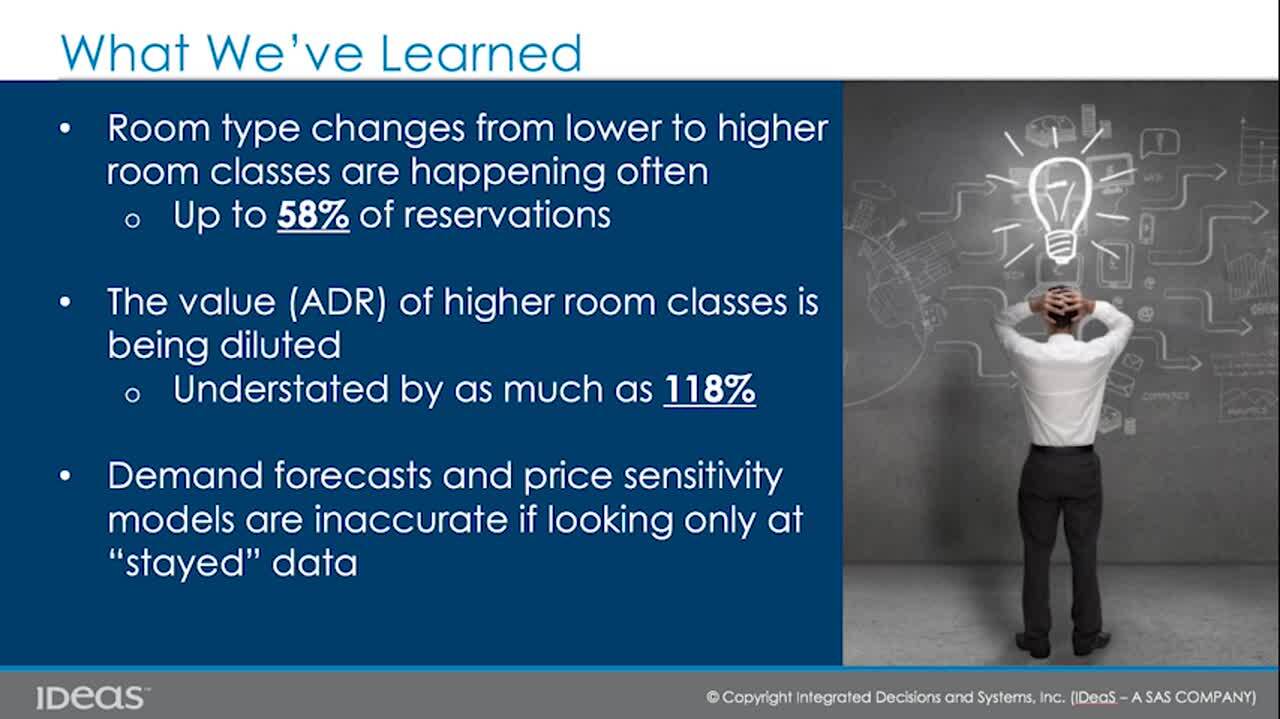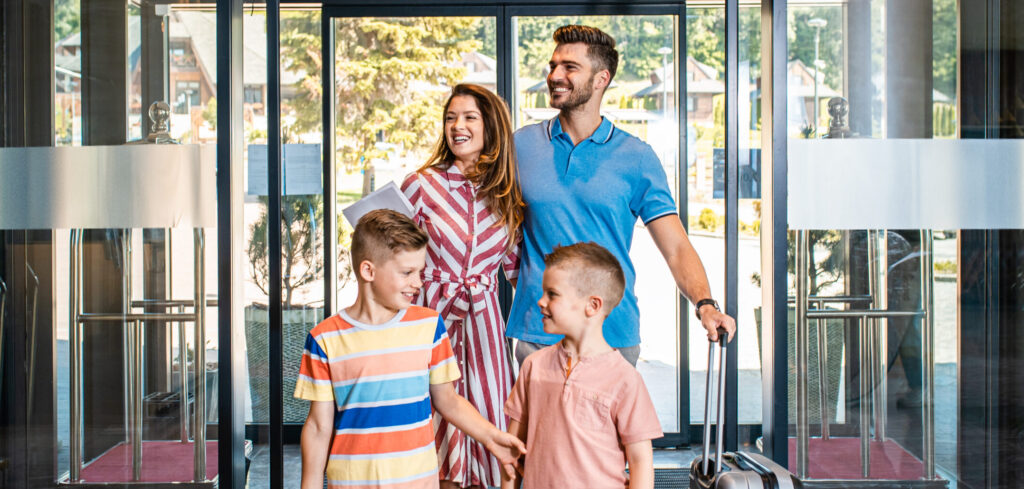Whether ‘tis nobler in revenue strategy to suffer the reservations and upgrades of outrageous fortune, or to take arms against a sea of data, and by opposing, better optimize them.
- Booked data represents transactional data that indicates which room type a guest booked
- Stayed data represents transactional data that specifies which room type a guest actually stayed in
- The hotel industry is demanding that technology catch up with the evolving needs of the consumer.
If Shakespeare’s not your thing, then let’s talk in modern terms: When your revenue management technology builds a forecast, and deploys pricing for each room type, is it based on “booked data” or “stayed data”?
Simply put, booked data represents transactional data that indicates which room type a guest booked, and stayed data represents transactional data that specifies which room type a guest actually stayed in.
Most reservations data that is integrated into revenue management tools is based on stayed data. There are many reasons why the industry has always focused on stayed data. KPIs are based on stayed data, and it’s important to know the physical room the guests stayed in. In addition, collecting both types of data means more data to process.
At IDeaS, we think there is significant opportunity in shifting from stayed data to booked data. Following research among the IDeaS client base we found instances where up to 60% of the time, the guest’s room type changes from a lower room class to a higher one with no additional revenue attached to the change.
Hotels that can take advantage of this insight, and use technology to make analytical sense of this new layer of data, can improve their revenue strategy decisions and better optimize their business.
Airlines have already figured it out
Airlines have long coped with passengers booking one seat and ending up in another. Airline revenue managers struggled with data sets created by scenarios where business class upgrades occur due to loyalty program perks. Let’s assume that a passenger books a coach class ticket and receives a free upgrade to business class. The flight data actuals show the business class seat as occupied with a rate that’s likely far less than the average price of a purchased business class ticket.
The revenue manager might think twice about pricing the next flight’s business cabin based on the occupancy and rate of this flight if there were several complimentary upgrades to business class. Airlines have learned to attribute demand and price sensitivity back to the originally booked cabin and fare so it won’t misrepresent demand for each class of service, or in the case of business class, dilute the rate for paying customers of business class.
However, airlines still upgrade because it provides a heightened customer experience and gives them the opportunity to resell coach class tickets, where the demand is greatest, at a premium as booking windows shrink and willingness to pay increases. It also gives them a clear picture of their upgrade strategy as data will show how many upgrades they need to issue to fully optimize the flight and how many remaining business class seats they should hold for any demand at the business class fare price.
The new normal for hotels
The hotel industry is, rightfully so, demanding that technology catch up with the evolving needs of the consumer. Technology is enabling new efficiencies—upgrades can be strategically planned whether paid or complimentary—to serve the operational needs of the hotel and the personal preferences of the guest.
IDeaS, as the innovative market leader, is committed to delivering these efficiencies because each one moves the profitability & personalization needle a little bit more. Using the right technology that leverages booked data versus stayed data, allows hotels to attribute demand back to the originally-booked room type and gain, not only a more reliable demand forecast, but also a more refined revenue strategy to optimize their business.
When hotels move away from manual rules-based revenue strategy tools and reach for adaptive machine-learning technology, there is no longer the need for room type offsets because your automated revenue solution is pricing each room type based on the most insightful sets of data.
Challenge the status quo:
- Is your revenue technology using booked and not stayed data?
- Are your room type prices analytically determined by machine learning rather than set by static offsets?
- Do you optimize all products from the commonly-sold standard room up to the coveted penthouse suite?
When hotels answer “yes” to these questions, then they are taking advantage of the most scientifically advanced technology in the market and opening up a world of opportunity—profit opportunity.
Watch a recorded presentation from the 2017 Cornell Hospitality Research Summit to learn more about booked vs stayed data:
- Shift Happens – How Revenue Science Adapts for a Post-Pandemic World - December 8, 2020
- Revenue & Reputation Management – Bringing Data Together - March 16, 2020
- 7 Travel Trends & Tech to Expect in the New Decade - February 26, 2020
